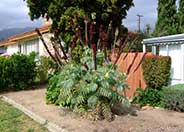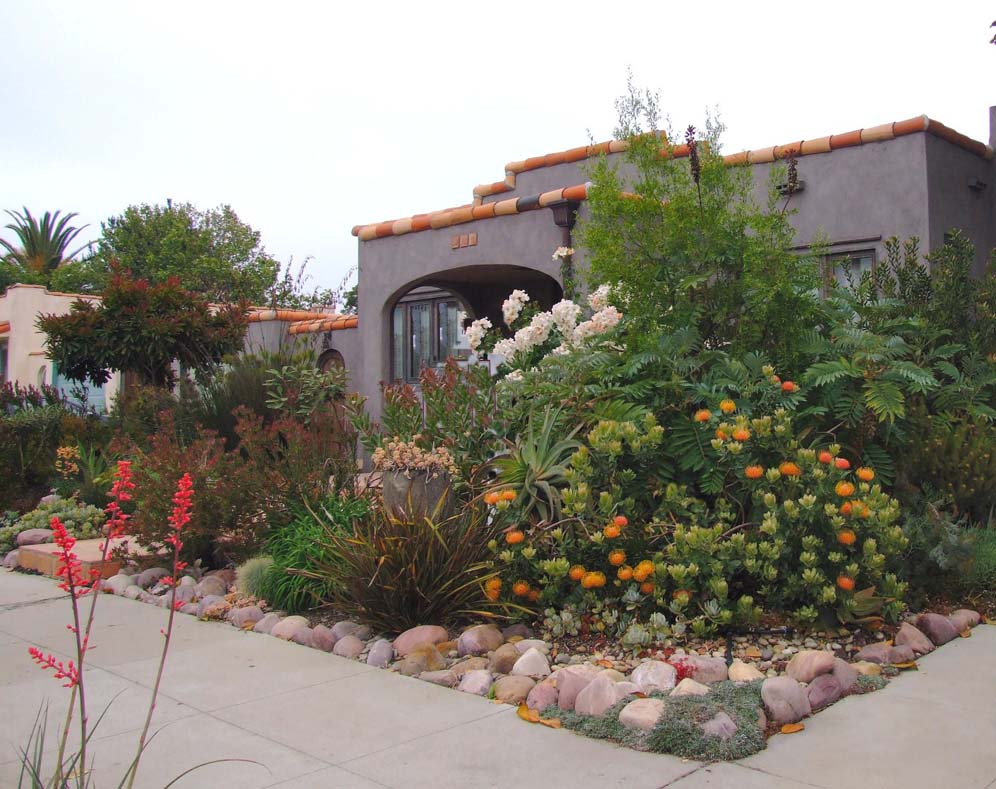
Common name:Honey Bush
Botanical name:Melianthus major
Melianthus major is an evergreen shrub. It is a soft-wooded plant of rapid growth to 12'-14'. It has a boldly patterned foliage with grayish green leaves of 1' long, divided into 9-11 strongly toothed leaflets. Foliage smells disagreeable when brushed or bruised. Foot-long spikes of reddish brown, 1" flowers appear in late winter, early spring.

Common name:Red Yucca
Botanical name:Hesperaloe parviflora
This spectacular succulent is wonderful for a desert garden, with rosettes of gray green leaves to about 3'-4' tall and 6' wide. Red flower stalks emerge during spring and remain on the plant until the end of summer. This shrub will spread to form a crowded grass-like clump. This evergreen shrub is drought resistant but will appear better and bloom longer with added moisture. It does well in full sun, reflected heat, poor soils and cold temperatures to at least 0 degrees F.

Common name:Hybrid Tea Rose (selections)
Botanical name:Rosa Hybrid Tea varieties
These shrubs and vines are the most loved in the Western USA and are very resilient. They come in a wide variety of sizes and colors and are easy to maintain with proper care. They can be used in a water-conserving garden with careful attention to irrigation practices.

Common name:Dymondia, Rock Ditty
Botanical name:Dymondia margaretae
This foliage is gray/green/silvery; it is a very dense, mat forming ground cover. It tolerates drought, cold, salt spray and poor soils. It's deep rooted and produces small, inconspicuous yellow flowers. Rock Ditty is great for use in between stepping stones or pavers.

Common name:Bronze Loquat
Botanical name:Eriobotrya deflexa
A small, evergreen tree with large leaves that are reddish bronze and turn green as they mature, this loquat is highlighted by clusters of small, white, fragrant flowers that are borne in the spring on branch tips.
Pratia
Dealing With Drought
More than half of the water used at your home is for outside purposes. Studies show that on average, half of the water used outdoors is wasted. The leading cause of waste is incorrectly set and poorly managed irrigation controllers. The second biggest cause of wastage is broken irrigation equipment that goes undetected. There are a few basic things you can do to make a big difference in your water use.
Click in the green box for more information
| Designer: | Rainbow of Colors |
Photographer: GardenSoft |
Soils and Compost:
Incorporate compost 6" into your soil to retain water, reduce compaction, feed earthworms, and provide valuable nutrients to your plants.
Water Saving Tip:
Integrated Pest Management:
Remove irrigation water and fertilizer from areas where you don't want weeds to grow.

